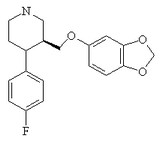 In the CAFC’s April 8 decision of SmithKline Beecham v. Apotex, the en banc panel vacated the original appellate court’s opinion relating to the experimental use exception to the public use bar of 102(b). The lower court had, somewhat controversially, found that experimental use may only be used to negate a 102(b) public use if the purpose of the experimental use was to assist in designing or testing of a claimed feature. Thus, because the “clinical trials tested only the safety and efficacy of PHC hemihydrate as an anti-depressant,” the original appellate panel found that those trials were not an experimental use of the chemical compound as claimed in claim 1.
In the CAFC’s April 8 decision of SmithKline Beecham v. Apotex, the en banc panel vacated the original appellate court’s opinion relating to the experimental use exception to the public use bar of 102(b). The lower court had, somewhat controversially, found that experimental use may only be used to negate a 102(b) public use if the purpose of the experimental use was to assist in designing or testing of a claimed feature. Thus, because the “clinical trials tested only the safety and efficacy of PHC hemihydrate as an anti-depressant,” the original appellate panel found that those trials were not an experimental use of the chemical compound as claimed in claim 1.
Rather than offering any opinion, the CAFC en banc decision simply vacated the court’s decision. At the same time that the en banc order was released, the three-member appellate panel released their rewritten opinion that avoided the experimental use issue entirely by finding an alternative grounds for finding the patent invalid. Specifically, the court (J. Rader) found that the patent was “inherently anticipated.”
What makes the case even more odd is that, Judge Newman’s dissent from the order declining to hear the case en banc was essentially a written as a dissent from the new Rader decision. Judge Newman criticized the new opinion’s expansion of the doctrine of inherent anticipation, arguing that the “breadth of the panel’s theory of inherent anticipation contravenes long-established precedent.” According to the dissent, if a compound’s existence “is not reasonably known to persons of skill in the field, its later discovery cannot be retrospectively ‘inherently anticipated.’”
According to the new decision, however, inherent anticipation does not require a person of ordinary skill in the art to recognize the inherent disclosure in the prior art at the time the prior art is created. Thus, it appears that a defendant, in order to invalidate a patent, must simply show that, more likely than not, a natural result flowing from an operation taught in the prior art would result in the claimed product.
In this case, the recreated panel found that the prior art was sufficient because it disclosed the manufacture of PHC anhydrate that naturally results in the production of the claimed compound (PHC hemihydrate). However, the court stated that a mere possibility of inherency is not sufficient for anticipation. (Citing Schering Corp.).
In concurrence, Judge Gajarsa found that the manufacture of PHC hemihydrate could be “a natural physical process” occurring “under normal climactic conditions and with no human intervention,” and thus found that it was an unpatentable process of nature.
In short, patent claims drawn broadly enough to encompass products that spread, appear, and “reproduce” through natural processes cover subject matter unpatentable under Section 101–and are therefore invalid.
Gajarsa’s concurrence is a foreshadow to the next few years where patentable subject matter will become a controversial area once again.
Links:
- File Attachment: SKB Apotex en banc order (49 KB)
- File Attachment: SKB Apotex Panel Decision (230 KB)
- SKB Apotex Original Panel Decision (From Georgetown Law Center)
- File Attachment: SKB Apotex District Court.pdf (2443 KB)
- Discussion of the original panel opinion: Part I, Part II, Part III, and part IV.
- Discussion of the en banc order and new appellate opinion: Part V, Part VI
- Howard Bashman provides an excellent commentary on the case via one of his readers.
- Information on SKB’s pay-out in the class action antitrust suit. (Link).
Smithkline Beecham Corp., et al. v. Apotex Corp., et al.
The U.S. Federal Circuit voted en banc to vacate a holding from a panel opinion with regard to the issue of experimental use, and the panel (J. Rader) has issued a new decision regarding a previous holding that the paroxetine…
Smithkline Beecham Corp., et al. v. Apotex Corp., et al.
The U.S. Federal Circuit voted en banc to vacate a holding from a panel opinion with regard to the issue of experimental use, and the panel (J. Rader) has issued a new decision regarding a previous holding that the paroxetine…